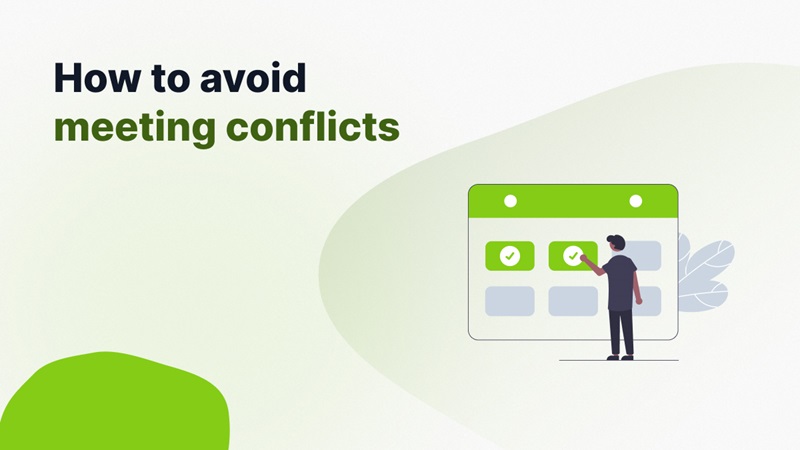The scheduling of IETF (Internet Engineering Task Force) meetings is crucial as it brings together international attendees from various time zones, demanding impeccable planning to minimize conflicts. A primary aspect of this involves avoiding clashes with other major industry events, holidays, or religious observances that might result in lower attendance. The chosen dates should ideally provide all participants with sufficient time to prepare for the meeting, ensuring maximum productivity.
Additionally, it is essential to consider the duration of the meeting and the availability of the attendees when scheduling session times. Strategic planning could involve dividing the meeting into multiple sessions spread over different days or weeks to accommodate participants from different time zones. This approach can ensure that the meeting is accessible to everyone, regardless of their geographical location and time zone. However, it is often challenging to find a time that suits everyone due to the global nature of the IETF. Therefore, a method of recording and sharing the discussion is beneficial for those who may not be able to attend in real-time.
Furthermore, understanding the necessity of breaks, especially for long meetings, can help in maintaining the attendees’ concentration and focus. Scheduling breaks at regular intervals can ensure that participants return refreshed and ready to contribute. Lastly, the use of advanced scheduling tools and software that can handle time zones, send reminders, and allow easy rescheduling can significantly assist in managing IETF meetings effectively and minimizing scheduling conflicts. These measures, when implemented appropriately, can result in a smooth and successful IETF meeting, fostering productive discussions and efficient decision-making.
Strategies for Effective Meeting Scheduling
Effective meeting scheduling is an integral part of business operations and can significantly impact productivity levels. One strategy involves planning meetings well in advance. This gives all participants ample time to prepare, reducing the likelihood of last-minute cancellations or rescheduling. Equally important is ensuring that meetings are purposeful, with clear objectives defined prior to the meeting. Without a clear purpose, attendees can feel that their time isn’t being valued, which can result in decreased engagement.
Another effective strategy is to consider the availability of all participants when scheduling. Using tools that allow participants to indicate their availability can streamline this process and minimize scheduling conflicts. Additionally, it’s crucial to limit the duration of meetings. Lengthy meetings can lead to dwindling attention spans, reducing their effectiveness. Therefore, meetings should be kept concise and to the point, ensuring that they only last as long as necessary to achieve their objectives.
Moreover, incorporating breaks in longer meetings can help maintain participant engagement and productivity. Breaks provide an opportunity for attendees to refresh and refocus, which can enhance the overall productivity of the meeting. It’s also advisable to implement a policy that encourages punctuality to reduce wasted time and ensure that the meeting can start and finish as scheduled.
Furthermore, it’s crucial to consider the different time zones of participants when scheduling meetings, particularly in global organizations. This ensures that all attendees can participate at a convenient time, which can increase engagement and productivity. Lastly, it’s beneficial to provide meeting agendas in advance. This allows participants to prepare and contribute effectively, enhancing the overall productivity and success of the meeting. Employing these strategies can ensure that meetings are scheduled effectively, making the most of everyone’s time and maximizing productivity.

Tools and Technologies to Avoid Conflicts
Tools and technologies designed to avoid conflicts are continually advancing, providing innovative solutions for both interpersonal and organizational disputes. One of these technologies is Artificial Intelligence (AI). AI algorithms can analyze vast amounts of data to identify potential friction points and suggest proactive measures to mitigate them. They can also be used in conflict resolution, helping to mediate disagreements in an unbiased manner. Furthermore, communication platforms play a crucial role in preventing conflicts. Platforms like Slack or Microsoft Teams can enhance clarity in communication, reducing misunderstandings that often lead to disputes. They also provide a record of conversations that can be referred back to if any confusion arises.
In addition, project management tools such as Trello and Asana can help prevent conflicts by enhancing transparency and accountability within a team. They allow everyone to see who is responsible for what tasks, preventing blames and disagreements over responsibilities. There is also conflict resolution software like CRES (Conflict Resolution Expert System), which helps individuals and organizations identify, address, and resolve conflicts efficiently and effectively.
Online training platforms can also be used to provide conflict management and resolution training to individuals and teams. This empowers them with the skills and knowledge to prevent and handle conflicts effectively, fostering a more harmonious environment.
In essence, numerous tools and technologies can be utilized to avoid conflicts. They range from AI and communication platforms to project management tools and online training platforms. By leveraging these technologies, individuals and organizations can foster a harmonious environment, enhance productivity, and ensure a smooth flow of operations.
Coordinating with Multiple Stakeholders
Coordinating with multiple stakeholders can be a complex, yet essential process in any organization. Stakeholders can be from various backgrounds and often have different interests, priorities, and perspectives. This can include employees, shareholders, customers, suppliers, and the broader community. As such, it becomes crucial to develop effective strategies for managing and balancing these diverse interests. Effective coordination involves clear communication, understanding and respecting others’ perspectives, and creating a win-win situation for all parties involved.
To achieve successful coordination, organizations must foster a culture of transparency, collaboration, and mutual respect. This includes regular meetings, open forums for discussions, and proactive engagement to keep all stakeholders informed about the organization’s decisions and actions. Furthermore, it is crucial to involve stakeholders in decision-making processes to ensure their views and concerns are taken into account. This not only improves decision-making, but also boosts stakeholders’ trust and loyalty towards the organization.
However, it’s important to remember that coordinating with multiple stakeholders can be challenging as conflicts and disagreements are likely to arise. In such cases, negotiation skills and conflict resolution strategies become vital. The goal should always be to reach a consensus that is in the best interest of the organization and all its stakeholders. Overall, coordinating with multiple stakeholders is a delicate balancing act that requires tact, diplomacy, and a fair amount of flexibility. It is an ongoing process that can significantly impact an organization’s success and reputation.

Best Practices for IETF Meeting Planning
Planning an IETF (Internet Engineering Task Force) meeting requires careful consideration and adherence to a set of best practices to ensure maximum productivity and effectiveness. One of the foremost steps is to establish a clear and concise agenda well in advance. This will provide participants with ample time to prepare for the meeting and contribute more effectively. The agenda should outline the meeting’s objectives, list topics for discussion, and allocate time frames for each topic.
Another significant aspect of planning an IETF meeting is selecting an appropriate location. The chosen venue should be conducive to productive discussions and equipped with the necessary technological tools such as high-speed internet, audio-visual equipment, and other necessary facilities. Furthermore, it’s crucial to ensure that the meeting is accessible to all participants, regardless of their geographical location. Therefore, offering remote participation options such as video conferencing can foster inclusivity.
In order to achieve the meeting’s objectives, it’s also crucial to assign responsibilities to specific individuals. This includes a designated chairperson to guide the meeting, a note-taker to record decisions and action items, and a timekeeper to ensure that the meeting stays on schedule. Another important practice is to ensure that there is adequate time for open discussion and feedback.
Lastly, it is vital to establish a code of conduct for the meeting. This should outline expected behaviors and responsibilities of all participants, promoting a respectful and collaborative environment. Following the meeting, it’s beneficial to share meeting minutes promptly and request feedback from participants to identify areas for improvement.
Following these best practices can significantly enhance the efficiency and effectiveness of an IETF meeting, facilitating productive discussions and fostering collaborative decision-making.

Case Studies: Successful Conflict Resolution
Case studies in successful conflict resolution offer valuable insights into the diverse strategies and techniques employed to address and manage tensions within various contexts. Whether it’s a clash between colleagues in a corporate setting, a dispute within a community, or hostilities between different cultures or nations, these narratives highlight the importance of effective communication, empathy, and mutual understanding in resolving conflicts.
One such example is the Salt Lake Olympic Committee’s handling of a major crisis, which threatened to derail the 2002 Winter Olympics. The case study demonstrates that even when faced with immense pressure and high stakes, it is possible to navigate through conflict by prioritizing transparency, accountability, and stakeholder engagement.
In another scenario, a conflict arose between indigenous communities and a mining company in Peru over land use and environmental concerns. Here, a multi-faceted approach was taken, involving third-party mediation, inclusive dialogues, and a commitment to respect indigenous rights and environmental standards. This case underscores the importance of considering all parties’ perspectives and working towards a mutually beneficial resolution.
In the world of business, a well-known case is the resolution of the Apple and Microsoft dispute over graphical user interface copyright issues. Both tech giants managed to settle their differences through negotiation and collaboration, leading to a landmark agreement that benefited both companies and the technology industry at large.
Successful conflict resolution is also evident in international relations. The peaceful dissolution of the Union between Sweden and Norway in 1905 is a prime example. Negotiations were carried out respectfully and without resorting to violence, which eventually led to the peaceful coexistence of the two nations.
These case studies in successful conflict resolution emphasize the necessity of open communication, understanding, compromise, and respect for different viewpoints. They serve as potent reminders that conflicts, no matter how complex or severe, can be resolved effectively without resorting to force or coercion.
